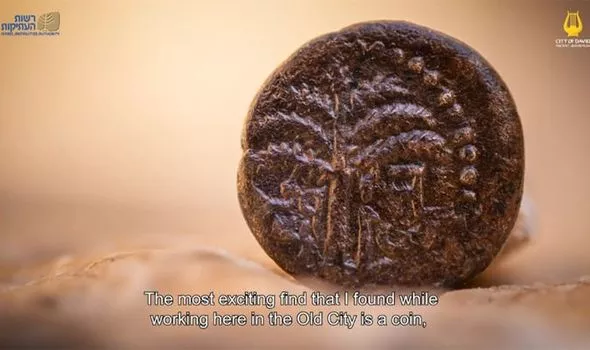Pecka 

A nearly 2000-year-old revolutionary coin as an archaeological dream come true
Categories: Finds and rescue research abroad , Nálezy nejenom s detektorem na blízkém východě
Israeli archaeologists excavating in Jerusalem have come across a very rare coin from the second century AD, the time of the last Jewish revolt of Bar Kokhba. The discovery has been described as "a dream come true", as it is only the fourth coin from this tumultuous period to be found here.
Experts place the coin in the period of the famous Bar Kochba Revolution (between 132 and 136 AD), when the third and last great Jewish revolt against the Roman Empire took place. To date, only three other coins from this period have been found within the walls of ancient Jerusalem. Archaeologist Moran Hagbi of the Israel Antiquities Authority (IAA) considers the coin "the most interesting find" he has ever made during his work in the Old City.
"The coin was found in the Davidson Center, right by the southern wall of the Temple Mount," Moran Hagbi explained. He continued, "I remember one of the workers - his name is Moshe - he has found many interesting coins. And he brought me this coin. I looked at it and very slowly began to realize that maybe it was a Bar Kochba coin."
The archaeologist then photographed the find and shared the images with the IAA's leading expert on ancient coins, Dr. Donald Tzvi Avriel. He did not confirm the coin's identity directly, but recommended sending it to a laboratory for cleaning and closer examination, just to be sure. The bronze coin is decorated with a vine with the text that reads, "Second year for the freedom of Israel."On the reverse side, the date palm - a popular symbol that still appears on Israeli coins today - can be clearly discerned, as well as the ancient Hebrew inscription that marked Jerusalem.
Mr. Hagbi said, "When the coin was sent to the lab, about a week later I flew to an archaeological conference. And just as I was standing in the hotel lobby, I received an email from Donald: 'Moran, you were right, this is the Bar Kochba coin. I saw a picture of the coin I was holding earlier and then I found myself screaming in the empty lobby. It was very exciting for me. It was actually a dream come true. This is the most meaningful find I have ever made in Jerusalem. And for me, it's a gift that I've been given in my research on Jerusalem."
The coin is only the fourth found in Jerusalem from this period. Life in ancient Jerusalem revolved mainly around the Second Temple on the Temple Mount, but the holy house was destroyed by the Romans in 70 AD. Since the coins were associated with the Jewish struggle for freedom, they often contain inscriptions such as "For the freedom of Jerusalem" or "One year since the redemption of Israel", etc. But how the coin ended up right next to the Temple wall is unlikely to be known today. Archaeologists admit that it may also have been lost by one of the Roman legionaries who collected similar coins as souvenirs.
Historians estimate that up to half a million Jews were killed during the revolt and many more were taken into slavery. The conflict is named after the Jewish military hero Simon ben Kosevah, or Simon Bar Kochba, who led the revolt. Bar Kochba is believed to have been killed in 135 during the Roman siege of the fortress of Betar. The revolt broke out after the decision of the Roman Emperor Hadrian to build a new colony in Jerusalem - the so-called "Aelia Capitolina". The plans included the conversion of the Temple Mount (as Judaism's holiest site) into a temple to the Roman god Jupiter.
Roman Nemec
Sources: jpost.com, express.co.uk



The article is included in categories:



